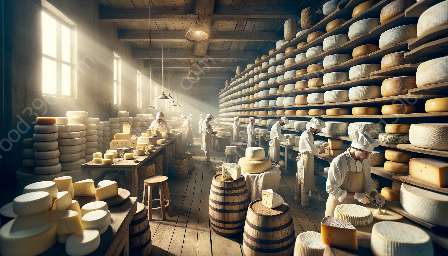Cheese Market Trends and Consumer Preferences
The cheese market is continuously evolving, driven by changing consumer preferences and market trends. Understanding these developments is crucial for cheese makers and those involved in food preservation and processing. In this article, we will explore the latest trends in the cheese market and how they impact consumer preferences. We will also examine their compatibility with cheese making and food preservation and processing.
Current Cheese Market Trends
As consumers become more health-conscious, there is a growing demand for natural and organic cheeses. This trend is driven by an increasing awareness of the impact of artificial additives and preservatives on health. As a result, there is a shift towards artisanal and farmstead cheeses, which are perceived as healthier and of higher quality.
Another significant trend in the cheese market is the rise of plant-based alternatives. With the growing number of individuals adopting vegetarian and vegan diets, the demand for dairy-free cheese options has surged. Cheese makers and food processors are responding to this trend by developing innovative plant-based cheese products using a variety of alternative ingredients such as nuts, soy, and coconut.
Furthermore, the trend towards global flavors and exotic cheeses has expanded the variety of cheeses available in the market. Consumers are increasingly seeking unique and adventurous cheese experiences, leading to a surge in the availability of international and specialty cheeses. This trend has opened up opportunities for cheese makers to experiment with new flavors and textures to cater to diverse consumer preferences.
Consumer Preferences in Cheese
Consumers today are more discerning and value-driven when it comes to their cheese choices. They prioritize authenticity, sustainability, and ethical practices in the production of cheese. Additionally, there is a growing preference for cheeses with distinctive flavor profiles and cultural significance.
The demand for organic and locally sourced cheeses has seen a substantial increase as consumers seek to support sustainable and environmentally responsible practices. This preference aligns with the cheese making process, as many artisanal cheese makers prioritize the use of natural and locally sourced ingredients to produce high-quality cheeses.
Moreover, consumer preferences are influenced by the desire for transparency and traceability in the cheese supply chain. Consumers seek reassurance about the origin and production methods of the cheese they purchase, prompting cheese makers to focus on providing detailed information about their products' sources and production processes.
Compatibility with Cheese Making
The current trends in the cheese market align with the principles of cheese making, emphasizing the use of natural ingredients, traditional techniques, and innovation. Artisanal and farmstead cheese making, which emphasizes small-scale production and traditional methods, resonates with the trend towards natural and organic cheeses. Cheese makers can capitalize on this trend by highlighting the authenticity and quality of their products.
Additionally, the emergence of plant-based cheese alternatives presents an opportunity for cheese makers to diversify their product offerings and cater to the growing demand for dairy-free options. By leveraging their expertise in food preservation and processing, cheese makers can explore innovative techniques to create high-quality plant-based cheeses that meet the taste and texture expectations of consumers.
Food Preservation and Processing
The evolving consumer preferences and market trends in the cheese industry have implications for food preservation and processing practices. As the demand for natural and organic cheeses grows, food preservation and processing methods need to prioritize the preservation of natural flavors and nutritional value while minimizing the use of artificial additives and preservatives.
Furthermore, the development of plant-based cheese alternatives requires advanced food processing techniques to create products that mimic the taste, texture, and meltability of traditional dairy-based cheeses. This presents an opportunity for food processors to innovate and create plant-based cheese products that appeal to consumers seeking dairy-free options.
Conclusion
The cheese market is dynamic, shaped by evolving consumer preferences and market trends. As consumers prioritize health, sustainability, and authenticity, cheese makers and those involved in food preservation and processing must adapt to these changing dynamics. By aligning with the latest trends and understanding consumer preferences, cheese makers can produce innovative and diverse cheese products that resonate with today's conscientious consumers.

